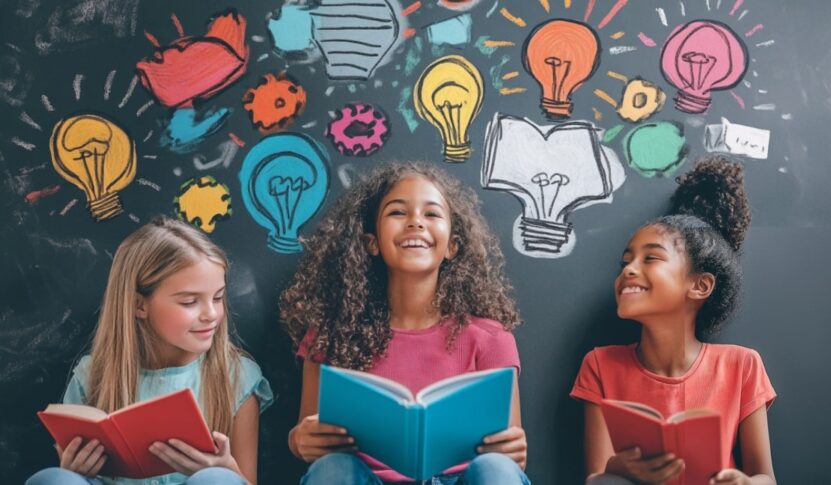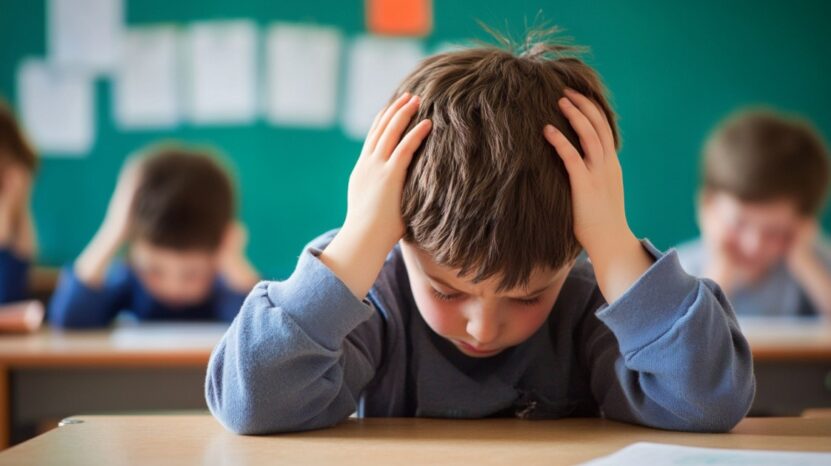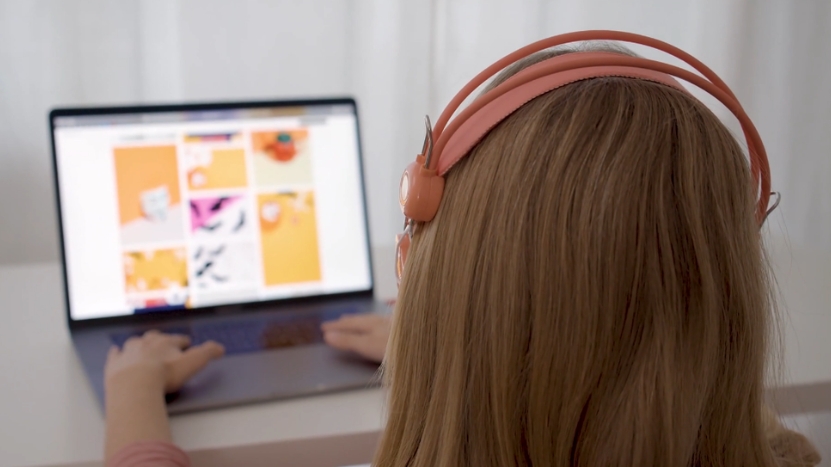
Share Post:
Social-Emotional Learning (SEL) refers to the process by which individuals develop skills to manage emotions, set goals, build relationships, and make responsible decisions.
In classrooms filled with students of varying backgrounds, experiences, and emotional needs, SEL has gained traction as more than just an add-on to academic curricula.
The purpose here is to emphasize how SEL directly shapes academic performance, supports mental health, and fosters long-term success in personal and professional arenas.
Table of Contents
ToggleAcademic and Cognitive Benefits of SEL
Academic success is not determined by intelligence alone. Emotional awareness, impulse control, and social skills contribute significantly to a student’s ability to perform well in school settings.
SEL provides the foundation for students to navigate challenges, collaborate effectively, and remain focused in environments that often demand multitasking and resilience.
Improved Focus and Classroom Engagement

Distractions are everywhere, inside and outside the classroom. SEL teaches students how to center their attention, manage impulsive thoughts, and stay engaged even during complex or repetitive tasks.
With emotional regulation in place, students can avoid meltdowns, manage frustration, and stay on task.
- Students develop better self-discipline and time management
- Emotional regulation supports sustained attention during lectures and independent work
- Increased motivation to learn, especially when content feels overwhelming or unfamiliar
Evidence of Academic Gains
Research conducted by CASEL shows a direct link between SEL and academic improvement.
Schools that adopt high-quality SEL programs report an 11–13% gain in academic outcomes across standardized testing, classroom performance, and overall GPA.
- Higher test scores and grade improvements across subjects
- Positive academic attitudes fostered through emotional confidence
- Increased willingness to participate in classroom discussions and group projects
Increased Responsibility and Independence

When students are taught to reflect on their decisions, regulate their responses, and set achievable goals, they take more ownership of their education.
SEL promotes self-awareness, which leads to better academic choices and a stronger internal drive.
- More consistent homework completion and preparedness
- Reduced procrastination due to goal-setting and self-monitoring strategies
- Students seek feedback and take initiative in addressing their weaknesses
Improved Attendance and School Participation
Engagement isn’t limited to in-class behavior. Attendance improves when students feel emotionally safe, respected, and supported by both peers and teachers.
SEL contributes to that atmosphere and makes school feel more like a place of purpose than obligation.
- Fewer absences caused by stress or social discomfort
- Higher participation in extracurricular activities and leadership roles
- Stronger connection to the school environment increases investment in learning
Postsecondary Success and Academic Longevity

SEL skills translate well into college and vocational settings, where independent learning and emotional regulation are essential.
Students who’ve been exposed to SEL frameworks are more likely to adjust to new environments, advocate for themselves, and manage academic stress.
- Higher rates of college completion and academic persistence
- Stronger group collaboration skills in university courses and labs
- Better adaptation to online learning, time constraints, and academic pressure
Cognitive Benefits That Last
Problem-solving, critical thinking, and memory retention benefit from emotional clarity.
SEL teaches students how to calm mental noise, reflect before reacting, and use failures as feedback rather than defeat.
Improved working memory and processing speed due to reduced stress. Enhanced reasoning and analytical thinking during academic tasks. Greater ability to learn from mistakes without emotional shutdown
SEL and Social Development
Classrooms thrive when students feel heard, respected, and emotionally connected.
Social-Emotional Learning creates the conditions for that to happen by promoting empathy, ethical reasoning, and effective communication.
- Listen to others without judgment
- Resolve conflicts calmly and respectfully
- Express themselves clearly and with confidence
- Cooperate with peers in group settings
As a result, classrooms shift away from competition and isolation toward cooperation and mutual support. Students become more likely to uplift each other rather than put others down.
Empathy serves as a stabilizing force in any learning environment. Putting oneself in another’s shoes doesn’t just improve interpersonal connections; it also leads to fewer incidents of bullying, exclusion, and harsh social behavior.
- Students become more accepting of differences
- Disciplinary issues decline significantly
- Social norms begin to favor kindness over cruelty
Teachers frequently report that SEL-focused environments experience smoother transitions between lessons, fewer disruptions, and stronger peer accountability. Classroom energy shifts toward collaboration when everyone feels psychologically safe.
Teachers and students form stronger connections, which ripple out into school culture.
- Morning check-ins where students share how they’re feeling
- Peer mentoring programs that create trusted support systems
- Cooperative learning activities that require team decision-making
- Reflection circles that help students process emotional events
Lifelong Impact and Workforce Readiness

Skills taught through SEL don’t expire upon graduation. They remain relevant in adult life, shaping how individuals perform in the workplace, manage relationships, and engage with their communities. Employers are not just looking for technical proficiency, they want team members who know how to communicate, solve problems, and adapt to change.
Emotional intelligence, conflict resolution, and resilience often determine success more than technical know-how alone. Students who receive structured SEL instruction develop the confidence and flexibility needed for leadership, collaboration, and personal growth.
Strong interpersonal skills create value in every field. Whether working on a team project, responding to criticism, or managing stress in high-pressure environments, those who master SEL competencies handle these situations with balance and composure.
Responding thoughtfully instead of reacting impulsively is a habit built through consistent SEL training during school years. It becomes second nature by adulthood.
Long-term success often begins with the emotional habits formed early. Studies link SEL competencies with better employment rates, job satisfaction, and professional stability.
Employees with high emotional awareness are less likely to experience workplace conflict, more likely to contribute positively to team culture, and often earn promotions faster due to their leadership potential.
SEL for Educators
Teachers today carry more responsibility than ever before. In addition to academic instruction, they often act as counselors, role models, and mediators. Without training in social-emotional learning, many face burnout, chronic stress, and difficulties managing classrooms effectively.
When educators are equipped with SEL strategies, the results extend far beyond improved test scores. Job satisfaction increases, connections with students deepen, and classroom dynamics shift toward cooperation instead of control.
SEL helps teachers cultivate self-awareness, recognize their emotional triggers, and adopt strategies to navigate stress. A teacher who understands their emotional responses models composure, respect, and empathy, qualities students are more likely to mirror.
Classrooms become spaces where patience and understanding replace frustration and reactionary discipline.
Successful SEL implementation depends not just on student participation but also on educator involvement. Teachers who embrace SEL create environments where trust grows, behavior improves, and academic achievement follows.
To help bring SEL into daily instruction without losing academic rigor, several methods can be applied consistently across subjects.
- Journaling exercises that promote self-reflection and help students process their emotions
- Peer mentoring programs that encourage students to support one another and build leadership skills
- Cross-curricular projects where teamwork, communication, and empathy are woven into academic tasks
- Classroom check-ins that allow both students and teachers to gauge emotional readiness at the start of the day
Science teachers can design experiments that require group collaboration and conflict resolution. Literature instructors may facilitate discussions that explore character emotions, motives, and ethical dilemmas.
Even math educators can include SEL through cooperative problem-solving or reflective conversations on perseverance through difficult problems.
The Bottom Line
Social-Emotional Learning plays a critical role in shaping students academically, emotionally, and socially.
Its influence stretches into adult life and professional settings. Schools must commit to making SEL a consistent, meaningful part of every classroom experience.
Teacher training, curriculum design, and administrative support should align with SEL principles. Prioritizing social-emotional growth builds not just better students but stronger, happier, and more connected individuals.
Related Posts:
- Changing Careers After 40 - Why Education Matters…
- Weighted vs. Unweighted GPA – Which Matters More?
- Why Game-Based Learning Is Key to Student Engagement…
- Why More Students Should Embrace Asynchronous…
- Why SplashLearn is a Game-Changer for K-5 Math Education
- Is That School Information Legit? Why You Need to Be…










